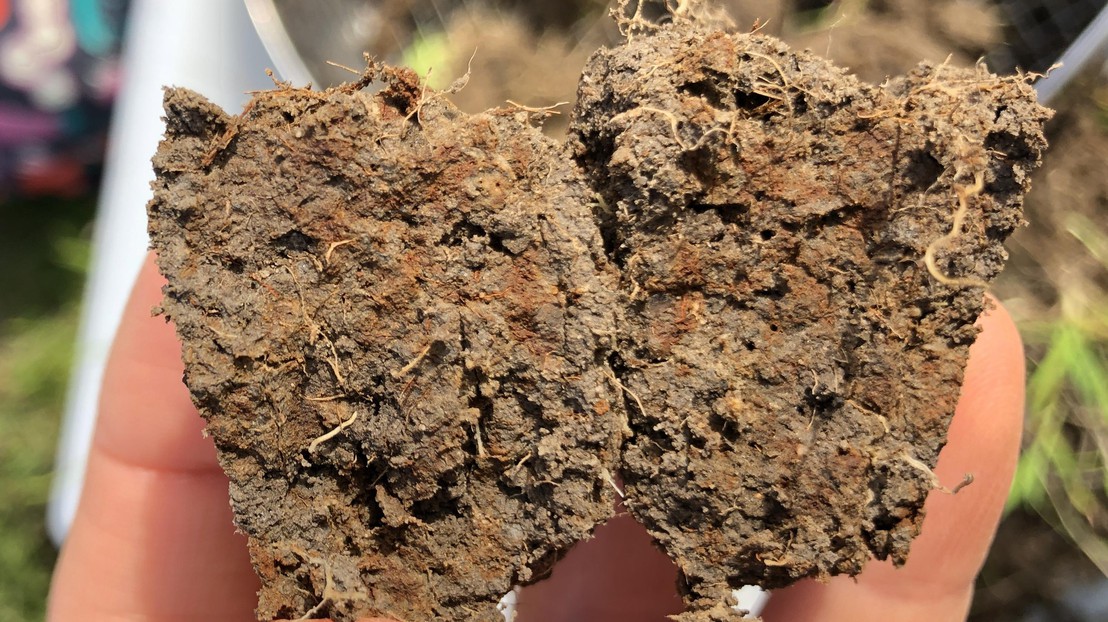New publication in Geoderma

Photo of a soil aggregate with heterogeneous distribution of redox conditions © 2022 M. Aeppli
A study led by Emily Lacroix, who is currently a postdoctoral researcher at the University of Lausanne, and Meret was recently published in Geoderma.
With the help of various co-authors, Emily and Meret assessed drivers of anoxic microsites in a California grassland soils. Anoxic microsites are zones of oxygen-depletion in otherwise well-aerated soils. They form when the consumption of oxygen, driven by soil microorganisms and plants, outpaces oxygen re-supply by diffusion. It was previously reasoned that the prevalence of anoxic microsites should be larger within soil aggregates due to limited oxygen diffusion.
We tested this posit by sampling two soils within a Mediterranean oak savanna (California, USA) at three depths and comparing the biogeochemical evidence for anoxic microsites between bulk soil samples and soil samples isolated from the interior of aggregates. We used methods that reveal both present and recent anoxic microsites, including the quantification of genes associated with anaerobic metabolisms and mediated electrochemistry. These methods provide biological and chemical evidence for reducing conditions, respectively.
We found no systematic difference in the prevalence of anoxic microsites between the interior of aggregates and bulk soil. Instead, our data suggests that the occurrence of anoxic microsites may be driven by the concentration of soil organic carbon. We further found greatest evidence for anoxic microsites in topsoils and soils with higher clay contents.
If you are interested in learning more, you can read the full, open access article Soil carbon concentration drives anoxic microsites across horizons, textures, and aggregate position in a California grassland by Emily M. Lacroix, Anna Gomes, Alexander S. Honeyman, Katie R. Huy, Scott Fendorf, Vincent Noël, and Meret Aeppli. https://doi.org/10.1016/j.geoderma.2025.117165